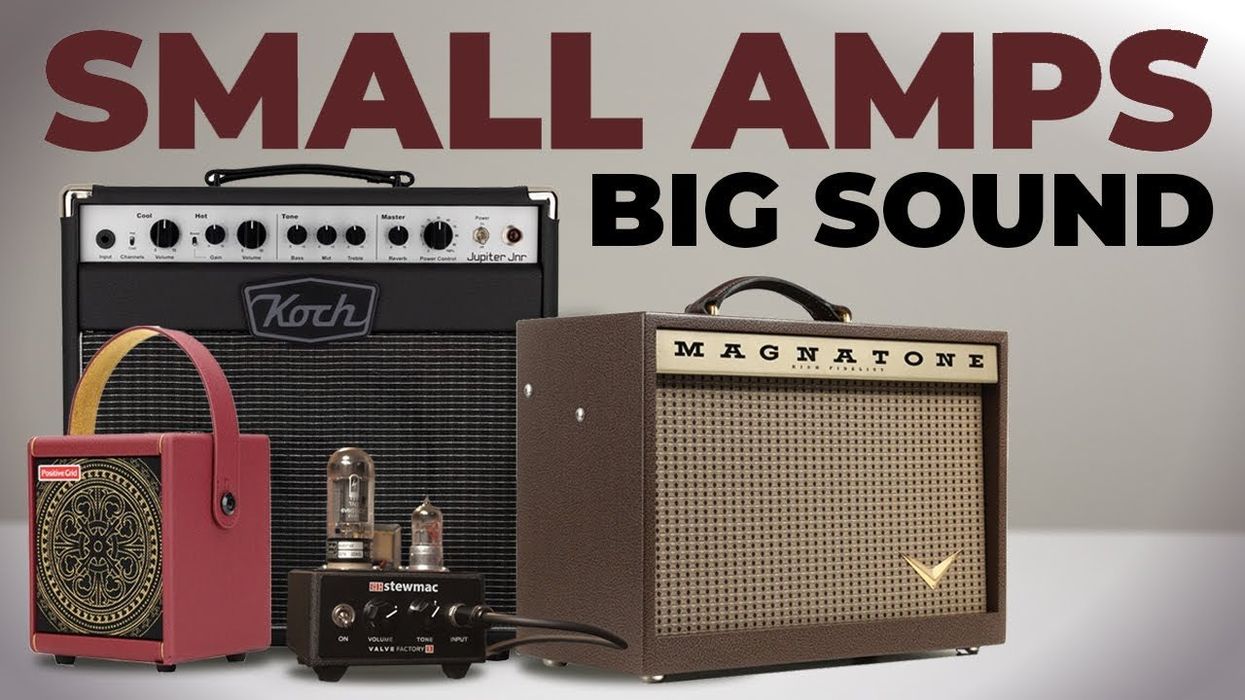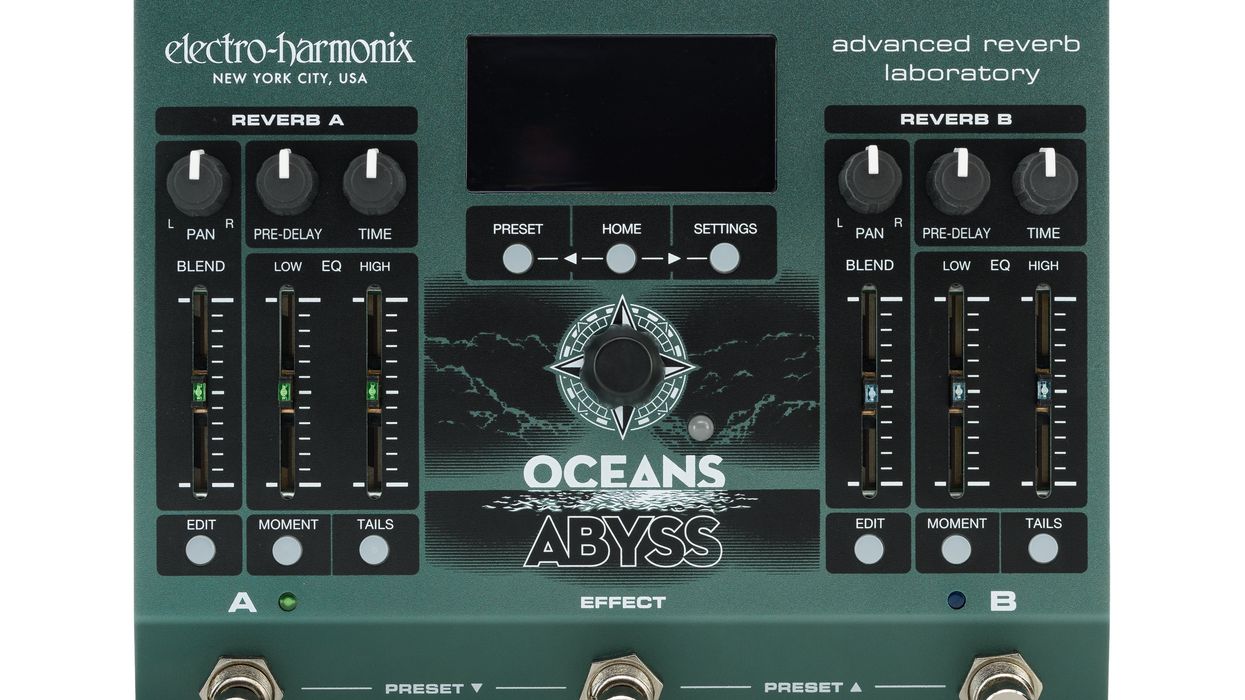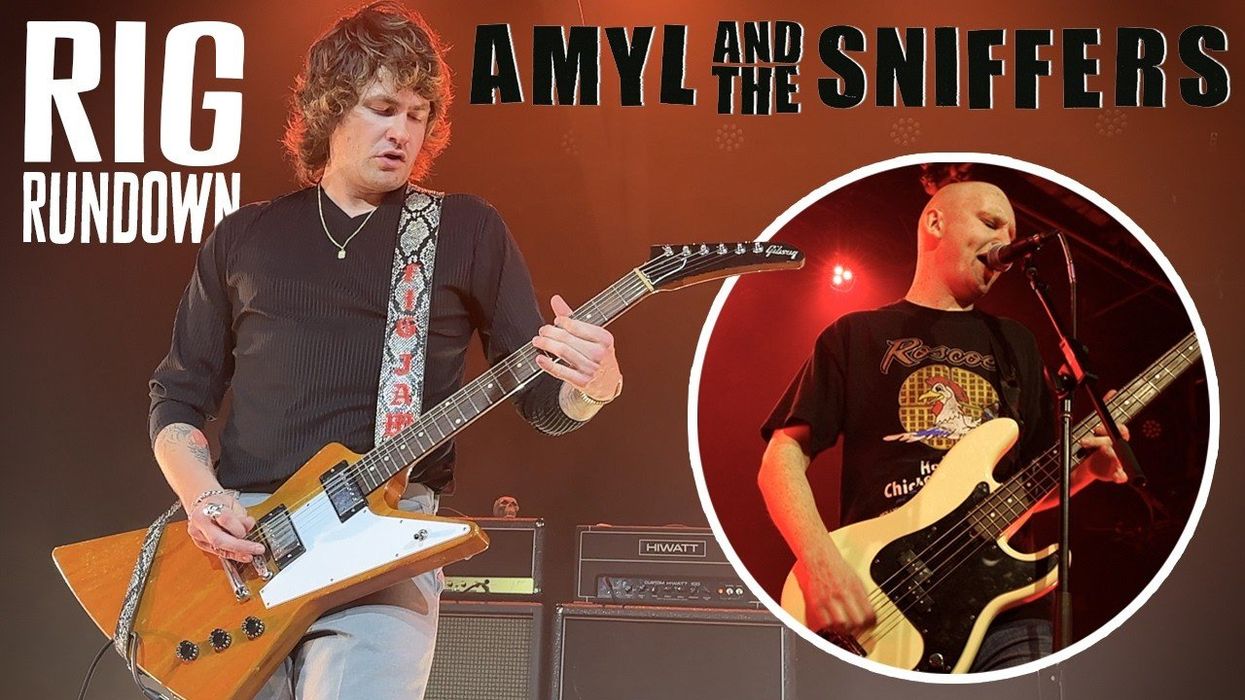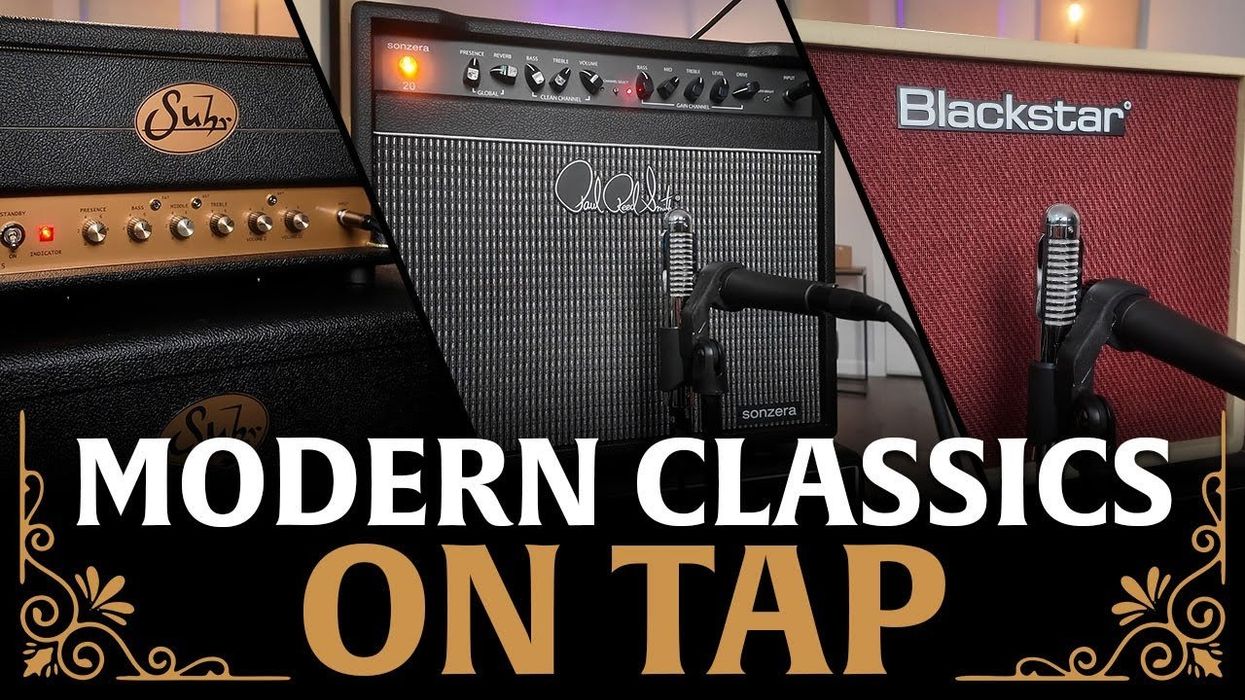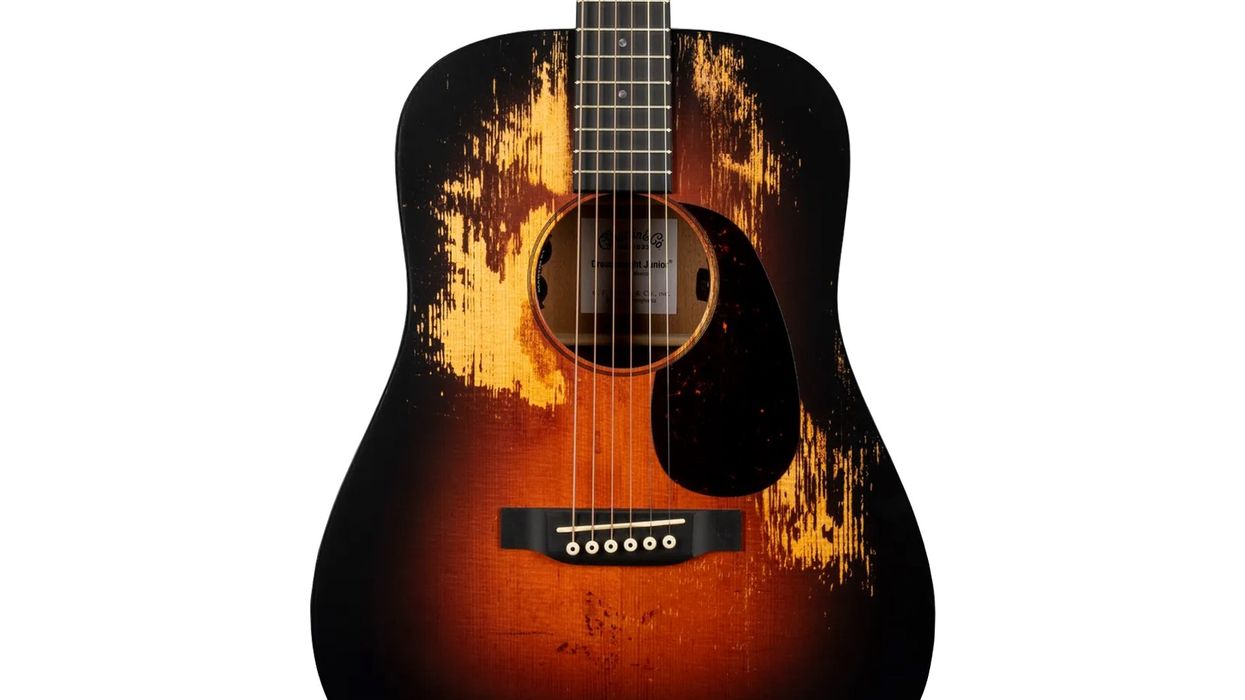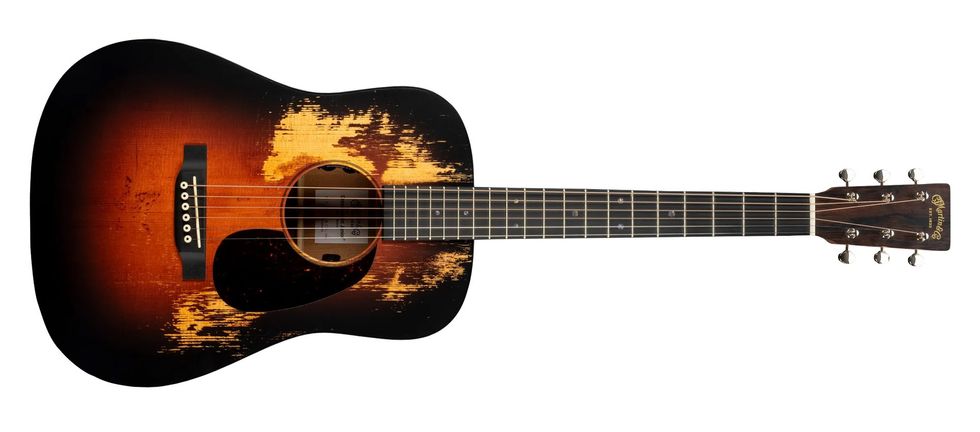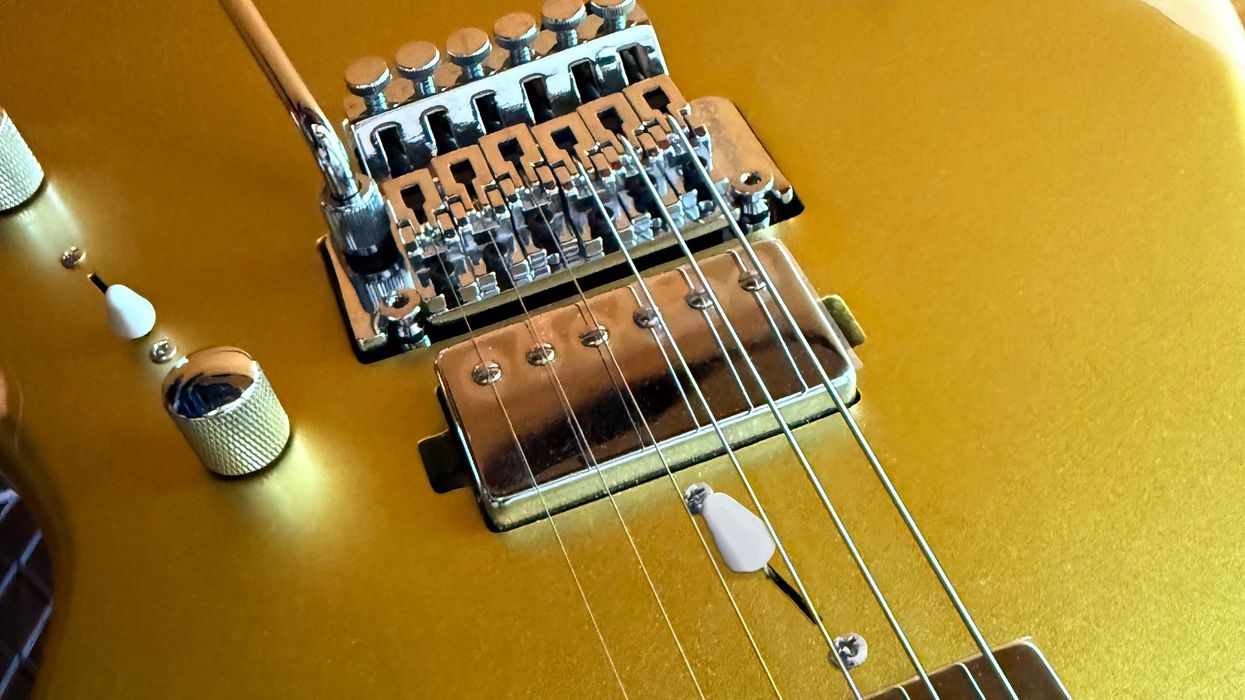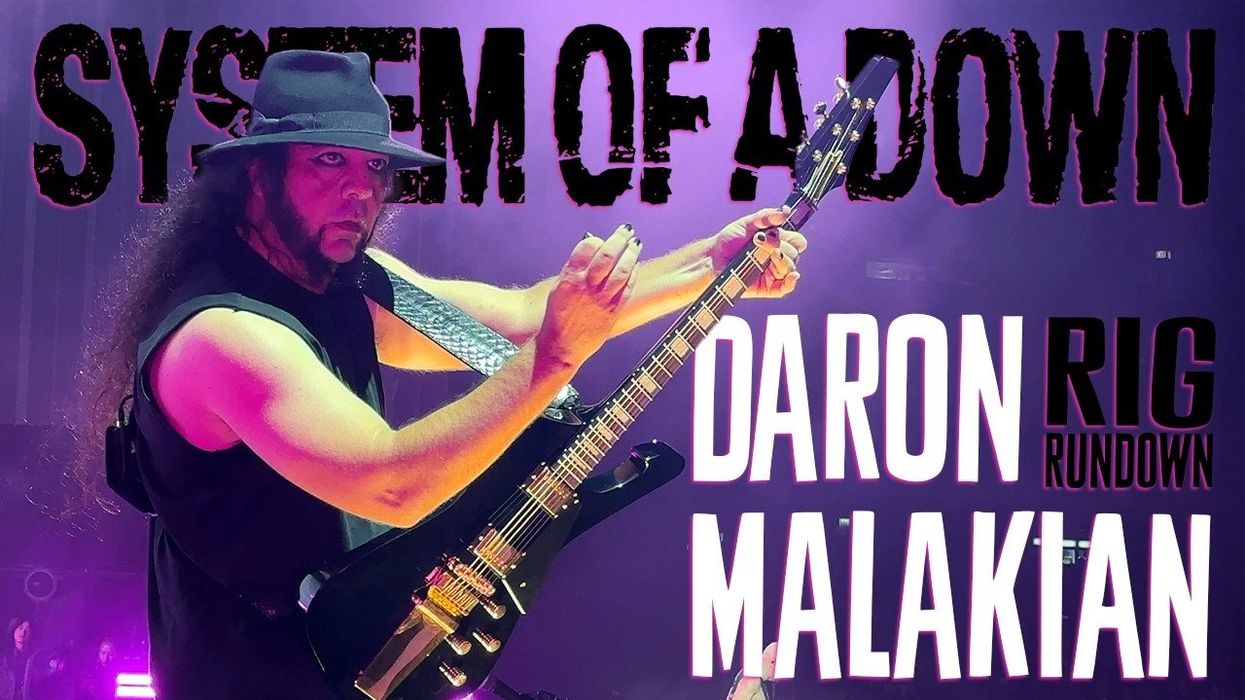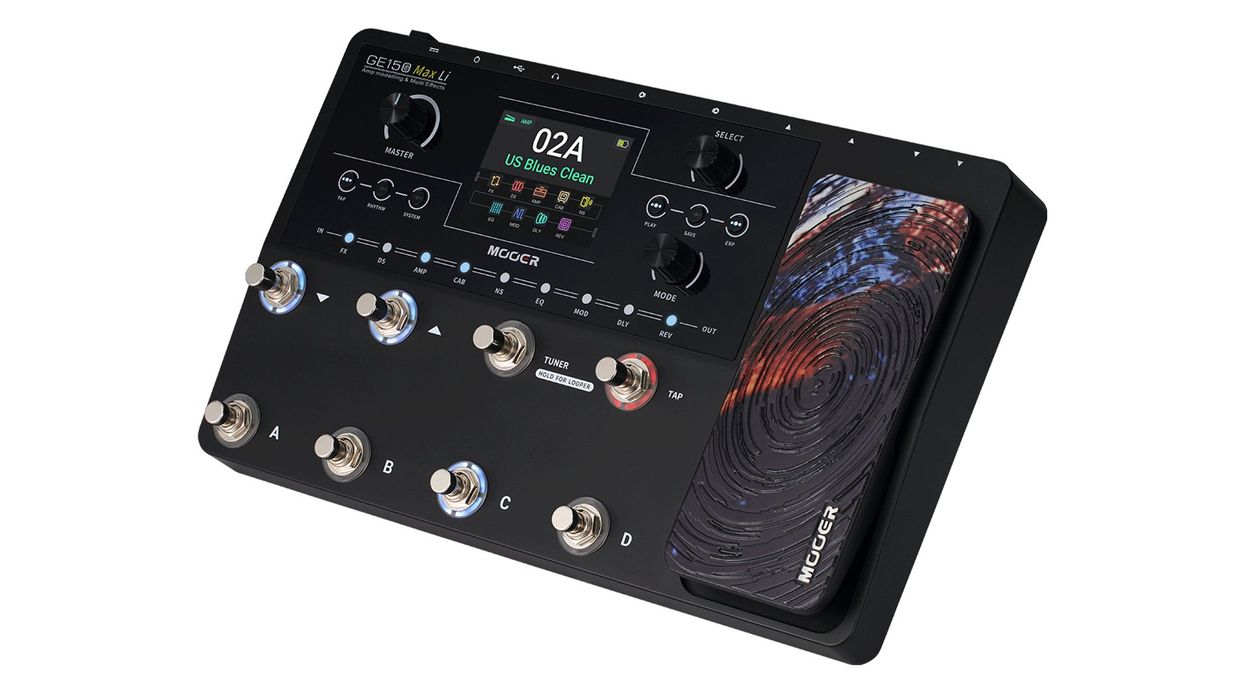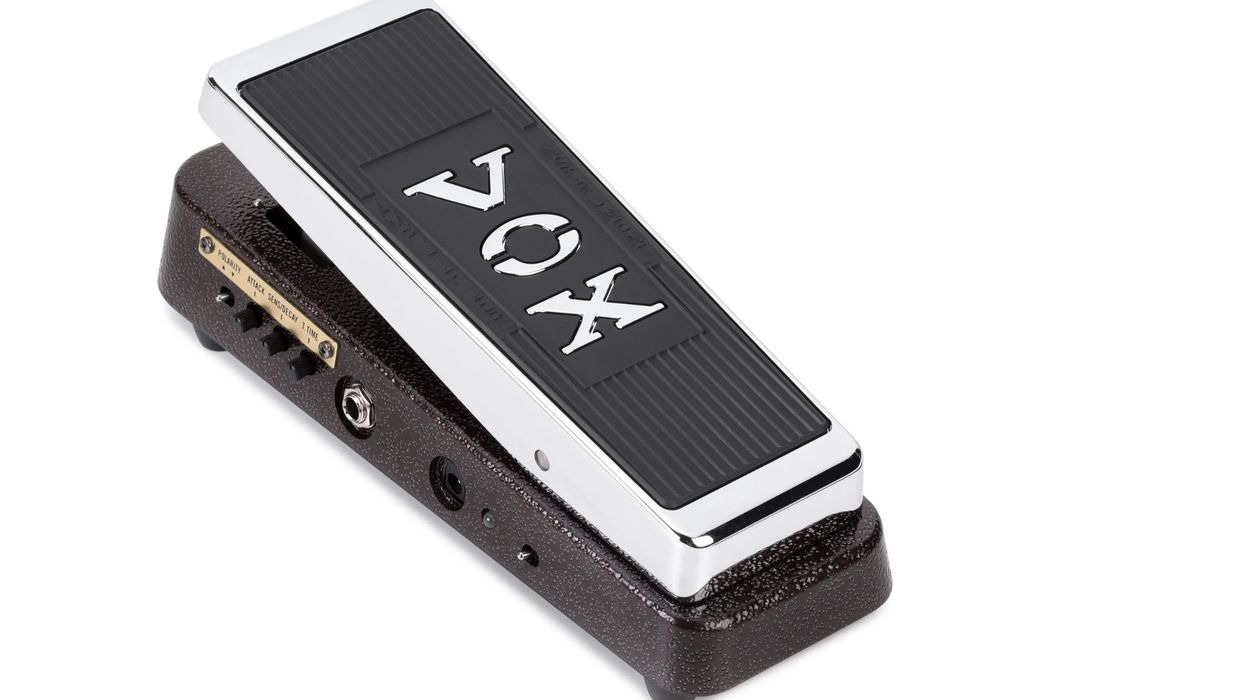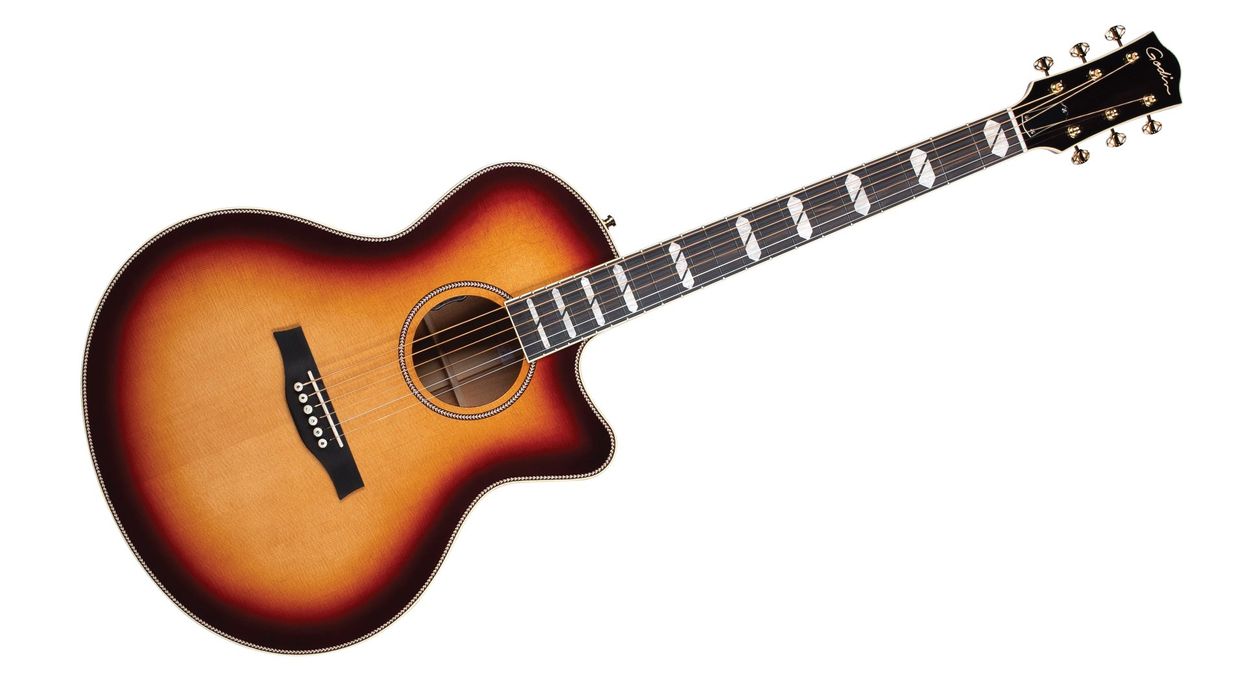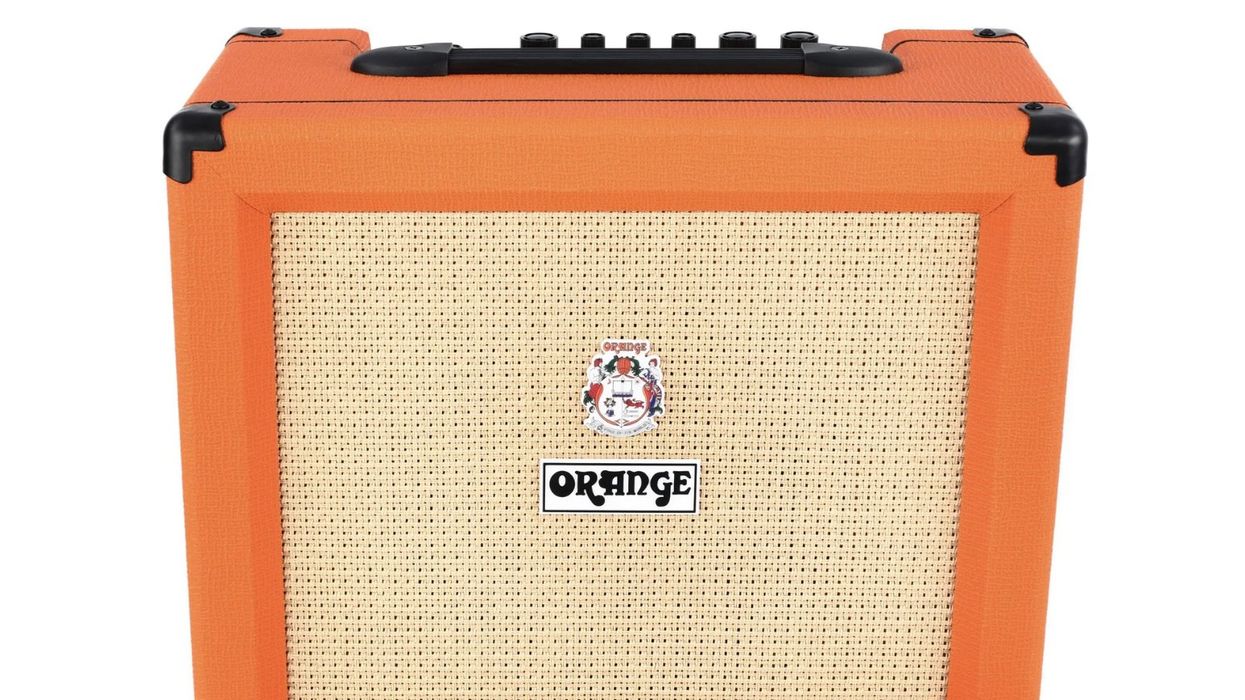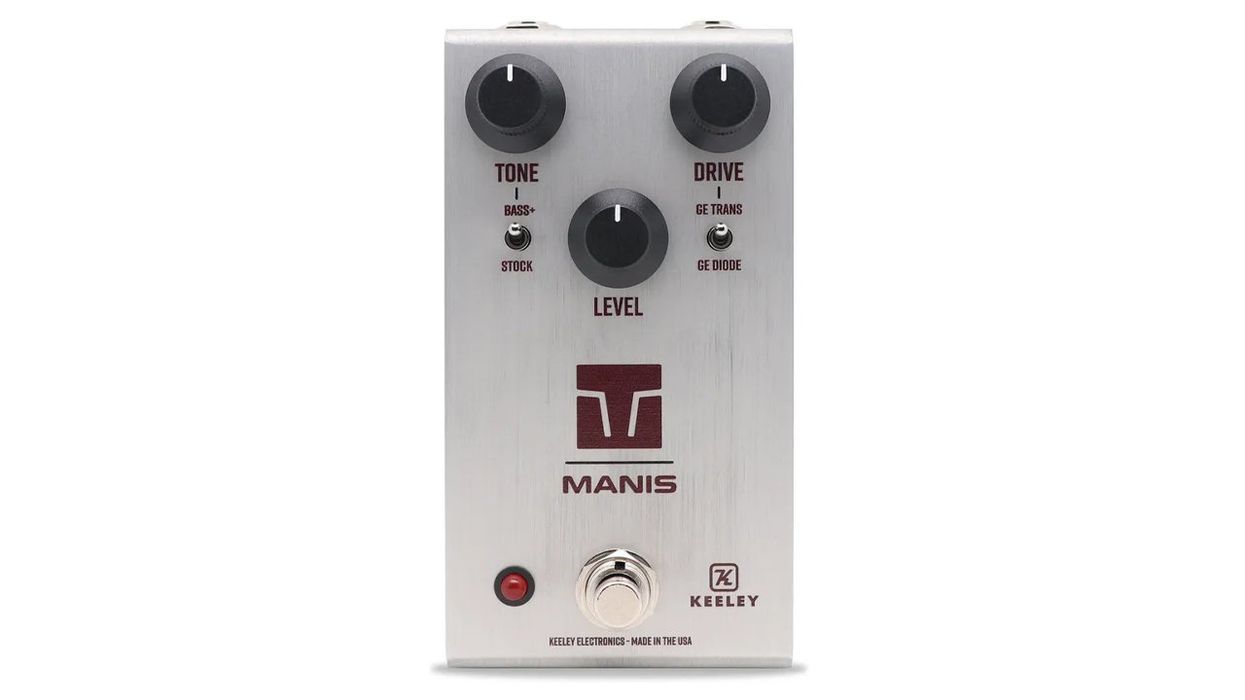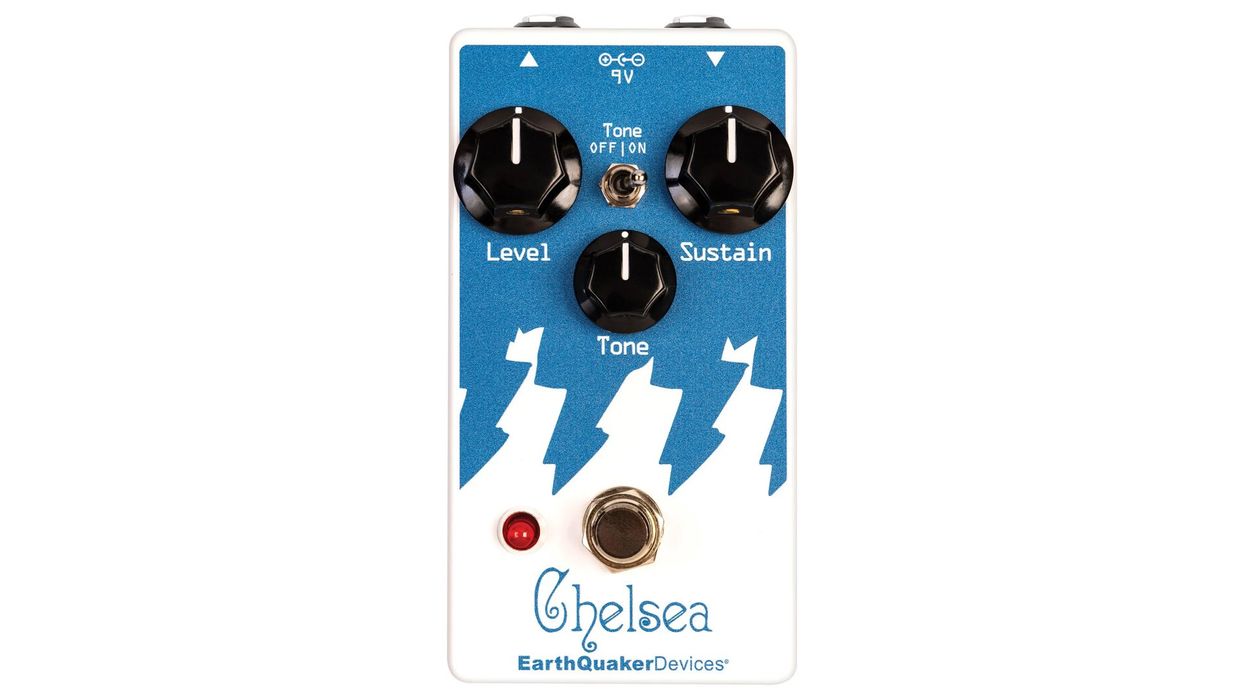Danelectros are go-to instruments for guitarists and bassists out to evoke the effortless, lo-fi cool of the 1960s. And for years, Danelectro’s unconventional styling, inexpensive Masonite-and-poplar body construction, and abundance in secondhand shops made them a favorite of garage musicians—or just those with little cash to spare. As a bonus, the unmistakable twang and clarity of Danelectro’s lipstick pickups made them sound fantastic. But as adventurous-looking as they could be, no Danelectro made as much visual impact, or had a signature sound, quite like the original Longhorn.
The compact, lyre-like body with its long, thin horns and slim headstock were a marked departure from Fenders and the big hollowbody basses that were popular during the 1960s. Not surprisingly, the Longhorn’s cool, punchy, concise tones made it popular among many pros. My first bass hero, Garry Tallent of the E Street Band, to name one, famously played one often during Springsteen’s Born to Run era in the mid 70’s. And no less than Jack Bruce and John Entwistle had turns with Longhorn basses in the mid ’60s.
Though the modern Danelectro company produces vintage-looking and sounding instruments that stick with those familiar, winning formulas, they aren’t afraid to tinker with well-established concepts either. The new Red Hot Longhorn bass isn’t exactly a radical departure from the original Longhorn, but Danelectro uses the shape as a Trojan horse of sorts for exploring a few new twists on the traditional Danelectro design and tone recipe.
"If a Longhorn bass was going to make the scene at the Rainbow Club on Sunset Boulevard, this would be it."
Lipstick Traces
If you’re used to the handsome copper-burst finish that’s synonymous with Longhorns, you’ll be knocked flat by the finish that gives the bass its name. Danelectro has dabbled with flashy finishes in the past, like the sparkle jobs from the ’90s and early 2000s, but this deeper, darker red along with the glossy black looks distinctly ’80s. If a Longhorn bass was going to make the scene at the Rainbow Club on Sunset Boulevard, this would be it. A cream-white binding highlights the contrast between the black and red, and in person, it looks pretty stunning. A single F-hole helps justify Dano’s claim that this is the first semi-hollow Longhorn, though technically, vintage Longhorns with their Masonite-on-pine-frame construction were semi-hollows without soundholes. Danelectro says that the F-hole configuration has a positive effect on the Red Hot’s sustain. That might also be helped by the updated lipstick pickups. Like those on the Longhorn baritone, these otherwise traditional-looking lipsticks are wound for hotter output.
Featherweight Flash
It would be fair to assume that a bass with a body this light would be top heavy. In fact, the Red Hot is well-balanced, and the weight—or lack thereof—astonishes at times. I can see how some of my friends that pull eight-hour shifts on Broadway in Nashville benefit greatly from its feather-like feel. On our review Red Hot, the action was pretty high. And as much as high action is conducive to replicating the feel of a vintage bass, most players will probably prefer less space between the strings and frets. In old-school Dano style, the Longhorn has a rosewood saddle for all four strings, so lowering the entire bridge was the only option for an action fix. Yet as primitive as that solution is, it worked like a charm. The aluminum nut slots (which is obviously much more challenging to alter without the help of a pro) also seemed a little high relative to the fretboard, but did not detract from playability much once I adjusted the bridge.
Bumpin’ and Burpin’
I was impressed with the “burp” and aggressiveness of the Red Hot with both pickups engaged and the tone all the way up. The bass comes from the factory equipped with roundwounds and the zing of those strings registers loud and clear in combined pickup and advanced tone settings. Even fret and hand noises sounded musical, inspiring and fun. That bark and presence isn’t lacking at other settings, though. The growl I heard from the bridge pickup was more toothsome than that from many solidbody basses, and I turned down the tone control frequently in order to tame the bite. Extra bass from an amplifier’s tone stack can be a great balancing factor if you like the basic sound of the bridge pickup alone. But the single pickup still leaves lots of room for nuance. The note volume along the whole length of the fretboard is surprisingly full and even, which compelled me to try out a walking jazz bassline. That’s not generally something I would try with a bridge pickup alone, but it sounded full and even here.
By itself, the neck pickup’s tone is thick and buttery. And it’s in this mode that you perceive the virtues of the semi-hollow construction most. There’s a woody essence in the lower midrange without the unpleasant byproduct of muddiness in the sub-low frequencies that often occurs in basses with the neck pickup located this far forward. When I played the neck pickup with a pick and muted with my palm, I heard the most pleasing, and in some respects, the biggest tones from the Red Hot.
The Verdict
The Red Hot Longhorn is an attractive bass that produces a greater variety of tones than its style suggests. The block at the neck/body joint and the relatively high string height at the nut might take time to get used to if a player’s experience with Dano basses is limited. But the playing experience and tones the Red Hot delivers are often quite unique. Combined with the eye-catching style, it’s a bass that can point a player in fresh creative directions.



